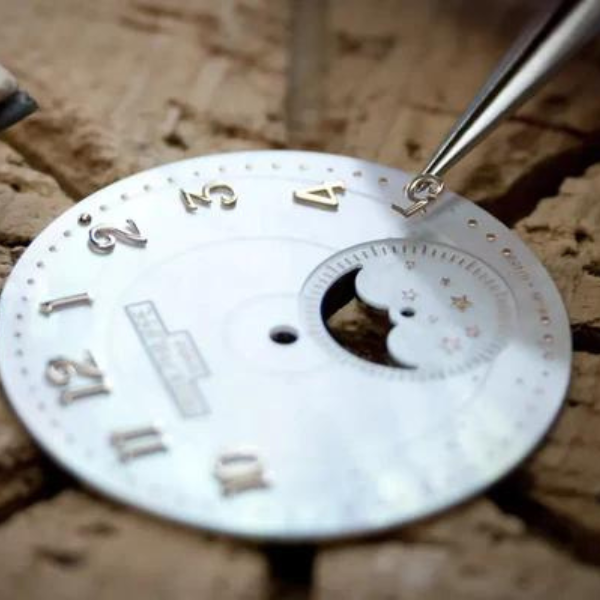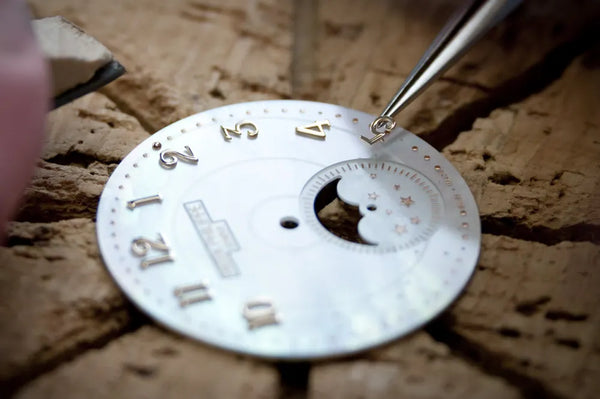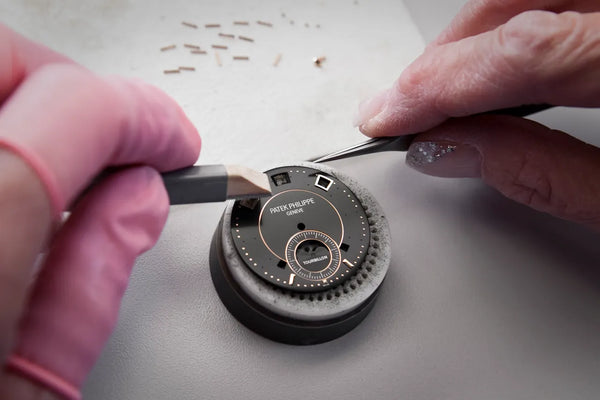
The average time it takes to check your watch is 0.8 seconds. The time it takes to notice an imperfection on the dial is even shorter. The imperfection you notice is smaller than a hair on your head. The reasonable question is… who cares? The answer is: Almost no watch maker. Almost.
The easiest part of the watch for an expert to ignore is the dial. Somewhere in a factory, most likely offsite, watch dials are stamped out like candy bars. It’s an easy job to outsource, and many don’t see the difference.
The watchmakers of Patek Philippe believe that just because you can get away with something, doesn’t mean you should.
The trend of outsourcing watch dials has gone largely unnoticed. But, a commitment was made years ago by Patek to be in complete control of the artistry of their watches. A promise was made to do more than strive for perfection… to achieve it. Anything less is simply unacceptable.
It’s easy to say such a thing, and most companies would. But, these are not just words to Patek Philippe.

While the making of a dial can get a bit technical, the story is quite extraordinary. Your average watch company, including some luxury brands, hires out specialists to make their dials. It’s efficient, and the dial is made by a team that specializes in the craft.
Since the beginning, Patek Philippe felt that wasn’t good enough. Any part of the process that wasn’t under their strict control could be a liability. And remember… they made a promise to the customers – to manufacture the exceptional.
The solution: They bought the premier dial factory, Cadrans Flückiger SA, in 2004. Each year, 100,000 dials are made in very specific batches of 100 to 500 each. Only about 10 out of every 25 made are of the standard required by Patek Philippe. The rest go to other manufacturers.
Between 50 and 110 steps are needed to fabricate a dial for a Patek Philippe watch. The process of making one starts with a stamp. One perfect circle of brass, and sometimes even gold. The rest is done by hand. It’s a precise process of electroplating, brushing, and engraving – measured in microns.

Then, color or texture is added. Artists must understand the chemical combinations that create the signature colors known to Patek Philippe customers. A coating of nickel, silver, or gold or an engraving made with the steadiest of hands with lines that are checked and double checked by experts.
Many watch makers have set this meticulousness aside in favor of efficiency and profits. They are fine watches, and they keep proper time. But, to allow the tiniest flaw or a seemingly irrelevant error would betray the trust Patek Philippe customers place in the high art of watchmaking.
When that much time and effort is spent on a single dial… you can only imagine what is going on inside that watch.
Want to learn more about the interworkings of a Patek Philippe?
Feel free to come into our Shreve & Co store and speak to an expert about how a single watch is made. All of the staff can discuss the merits of any Patek Philippe, but if you really want to hear more about the history, ask for Thor in our Palo Alto location. You can also schedule an appointment online today.


